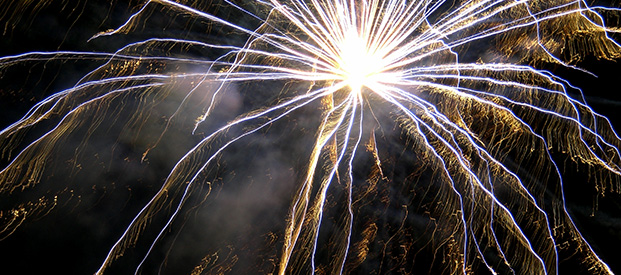Are We Forgetting Guy Fawkes Night In Favour Of Halloween?
As the beloved British summer time comes to an end, you could be forgiven for thinking that the best part of the year is over – that is, until you remember just how much excitement is left in October, November and December. Whilst nobody needs to be reminded why December is a time for permanent cheer, a lot of people forget that the last week of October and the first week of November hold some of the biggest thrills around. You’ve got Halloween on October 31st and Guy Fawkes Night – or Bonfire Night, as it’s more commonly known – on November 5th.
These dates are very important to British people and they’re celebrated with much vigour and enthusiasm. For everybody not excluded by virtue of religious or personal beliefs, both Halloween and Guy Fawkes Night are a chance to blow off steam, get creative and have some fun. There are the true delights of having an excuse to don fancy dress, eat huge amounts of themed sweets, try some ghoulish scares and dress up your home on the one hand and history, intrigue, fireworks and toffee apples on the other.
In fact, many young people don’t know why we celebrate Guy Fawkes Night in the first place. Many of the older generation grew up with the epic story of gunpowder, treason and plot and it creates an important chapter in history. In many ways, Bonfire Night has gone the same way as Halloween, with the commercial aspects of both now starting to overwhelm history and tradition. In another thirty years, the tale of Guy Fawkes and the gunpowder plot may be largely overlooked.
We don’t need an excuse to talk about any date or annual festival and tradition here at Rose Calendars and to show our love for November 5th, here are a few facts about the elements which go to make up this celebratory time of year:
The Fireworks
The invention of fireworks can be traced back to 7th century China where they were used to celebrate festivities and they form an important part of the culture there. With China being the largest producer and exporter of fireworks in the world they are used widely during events such as Chinese New Year and a Mid-Autumn Festival.
With hundreds of different varieties on the market, they are usually either ground or aerial types, with sky rockets providing their own propulsion or being shot into the air by a mortar or aerial shell. Most fireworks are made of a paper tube or casing filled with combustible material. Often this is pyrotechnic stars or compounds which are shot out of the case to provide the colourful displays we have come to love, lighting up our skies.
It is therefore totally acceptable to let off explosions and displays of coloured fire around Bonfire Night. If you didn’t know what was going on, you might be terrified, but the best organised displays can be great value and good fun.
A Sense of History
Is there any better story than the tale of Guy Fawkes and his thwarted plot to blow up Parliament in 1605? It doesn’t matter whether you think that he was a folk hero or a terrorist, you’ve got to admit that it’s an exciting slice of history. The fact that the story is so brutal and true makes ‘Game Of Thrones’ look like Robin Hood. With the burning of ‘guys’ on bonfires around the country, it is interesting to learn that Fawkes did not devise or lead the plot to assassinate King James I, yet he is still known as one of British history’s greatest villains. It was a group of disaffected Catholics who led the plot for the assassination and hoped to restore Protestant England to Catholicism. Use the opportunity this year to really get inside the history and learn all about the plot and facts which make up this fabulous area of Britain’s past.
The Bonfire
The only Guy Fawkes Night tradition more beloved than fireworks is the bonfire. There’s something endlessly fascinating about fire, which goes some way to explaining why we’re happy to sit and stare at one for the duration. On looking for the origination of the word ‘bonfire’, it is interesting to learn it is derived from the pagan festival of bone burning (‘bone’ being shortened to ‘bon’), which was close to St. John’s Day on June 24th. This is probably related to the Summer Solstice in the middle of the same month which was a popular time to have fires or rituals to celebrate midsummer. It is likely that this pagan festival was “Christianised” by the Roman Catholic Church to gain the following of the pagans. Either way, it is great that there is a reason to have bonfires in November, but that now it is only a stuffed dummy of a guy which is burnt and not bones!











